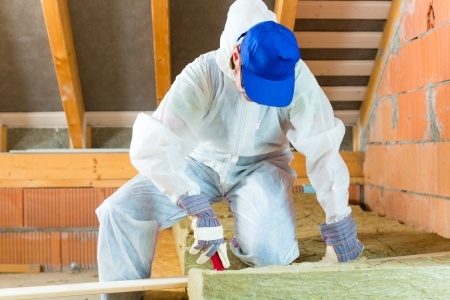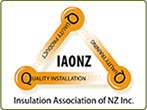New House Insulation

Choose the best insulation for your new home
Prior to 1978, the majority of new houses in New Zealand were built without insulation, but time has since moved on. Over the years we have developed a better understanding of the dramatic benefits to living conditions that can be achieved with home insulation. Today, thermal insulation is no longer considered a luxury, but a necessity to a healthy modern life. Insulating your new home to a certain standard is not only a recommendation, but a legal requirement.
The law regarding new home insulation
In 1978, new legislation was introduced to make thermal insulation a requirement for all new homes and major renovations in New Zealand, and in November 2007 the minimum legal standard was raised.
The country is divided into three zones which are based on each region’s climate, and the requirements for your new home will vary depending on which of these your property falls into. Each zone stipulates a minimum R-value – that is a measure of thermal resistance performance – for a home’s roof, walls, floors, heated floors, windows and skylights. You can find a breakdown of these requirements here*.
Saving money on new home insulation
Building a new home is expensive. Can I insulate to the minimum legal standard now, and add more insulation later down the line if it becomes a problem?
The short answer is yes, we can retrofit extra insulation in an existing home. However, the minimum requirement is just that – a minimum – and it is far more advantageous to insulate to the highest R-value you are able at the outset.
It is significantly easier and cheaper to insulate a new home during the building process. Retrofitting insulation is a more complicated process which will incur greater costs, so it is advisable to make installing the highest possible standard of insulation in your new home a short term priority.
Your energy savings will begin the very day you move into your new home, if you have chosen to insulate to a high standard, and after a short while the extra cost of doing so can pay for itself five-fold or more.
Why is good insulation so important?
- Without insulation, a huge proportion of heat is lost from the structure of your home. Approximately 40% of the heat you pay for can escape through your roof, 30% through your windows, 30% through your walls, 15% through your floor and around 10% through other air leakage.
- A fully insulated home only requires around half of the heating that an uninsulated house needs to maintain the same temperature. This is a massive and immediate cost saving for the average Kiwi, and a financial benefit that will be reaped for decades to come.
- For the environmentally conscious among you, this also means your household carbon emissions will be much lower, doing your bit to preserve a better environment for future generations of New Zealand.
- The thermal heating provided by your insulation will greatly reduce your likelihood of finding damp and mould in your home.
- New Zealand has the second highest asthma rate in the world, and it is no coincidence that a third of our homes still currently have inadequate insulation. Research shows that a cold and damp home leads to significantly increased rates of respiratory illness and hospital admissions in adults and children, and good insulation is one of the most effective ways of combating this problem.
- Due to the sound absorbing qualities of insulation materials, noise disturbance from outside can be effectively reduced by insulation in the roof, walls and floors.
- A well insulated home is worth more on the property market, so when the time comes to sell you will encounter yet another major cost benefit of your decision.
- If you are building an investment property, your tenants will be more likely to be happier and stay for longer in a well-insulated home.
Insulating your new home: The basics
When preparing to insulate during the building process, you can work with your architect and builders and your Natural Insulation installer to design a tailored plan based on your variables, in order to maximise the energy efficiency and cost effectiveness of your new home. This approach may take into account the interaction between your choice of insulation and the other factors that are specific to your build, such as building components, site conditions, climate, household appliances, and more.
You will initially want to consider what parts of the house you want to insulate. It makes sense to prioritise insulation from the top down, as the majority of heat is lost through the ceilings, but for a healthy, toasty home it is recommended that you fully insulate from the roof right down to the foundations.
Ceiling insulation
The two most common products used to insulate ceilings are called bulk insulation and loose-fill insulation.
Bulk insulation is normally the preferred type, and can be installed as segments or as blankets. Blankets are rolled out across the top of the ceiling and joists, while segments are stuffed in between the joists. Segments will require a higher R-value to comply with legal requirements as more heat is lost through the timber. Blankets are typically easier to add to in future, if you later decide to retrofit more insulation.
Loose-fill (or injected) insulation has a more variable performance, and has been linked to a greater chance of moisture problems. This kind of insulation is blown in, rather than rolled out or stuffed. This is most useful in retrofit situations where there is not much crawl space in the cavities.
If your new home has a skillion roof or cathedral ceilings it is still possible to add ceiling insulation with the advice of a good builder or roofer.
Wall insulation
As with ceilings, your two primary options for insulating your walls are bulk insulation and loose-fill insulation, which carry the same advantages and disadvantages as when insulating your roof.
Bulk insulation is impossible to install in an existing home without removing the wall lining or cladding, so it is especially important to adequately insulate your wall cavities during the building process of your new home.
Loose-fill, however, is able to be injected into small holes in the lining or cladding at any stage, but the downside of this is the lack of visibility means you will not be able to assess with certainty whether the entire cavity has been filled.
The optimum choice for wall insulation is to order a good quality brand with the highest R-value possible in the same thickness as your wall. A thicker layer than is necessary is not advisable, as compressing the insulation will actually lead to a loss in its efficiency.
Underfloor insulation
There are two ways of insulating underneath the floors of your new home. The recommended method is bulk insulation, with any one of a range of materials, including but not limited to fibreglass, wool, polyester or polystyrene. This enables your insulation to have a measurable R-value, and means the installation process is relatively straightforward.
The alternative method is foil insulation, which, despite once being the most common method of underfloor insulation in New Zealand, is no longer recommended due to major issues with safety and performance.
Where to start?
Here at Natural Insulation, we are proud to be able to offer you the freedom of choice between the best market leading brands of insulation in New Zealand, all of which can be expertly installed in your new home by your nearest Natural Insulation installer.
To help you decide, here is a summary of our biggest brands’ main features:
Bradford Gold offer an industry-leading 70 year warranty on their high quality glass wool sheets of insulation, which boast a high R-value of 6. Lower R-values are available for specific conditions, which your Natural Insulation installer can advise you of. Bradford Gold was the insulation brand of choice for the New Zealand government during their home insulation promotions. It is also an excellent choice for asthma sufferers, as the material is bio-soluble, meaning ingested fibres break down inside the body within 10 days.
Pink Batts insulation is the third generation of this popular brand, and has been designed entirely with New Zealand climatic conditions in mind. It was at one stage awarded the highest M1 Air Quality Certification (an independent Swedish air quality certificate), and has benefitted from 50 years of constant development and innovation, tailor made for Kiwis. Pink Batts is made of high quality 80% recycled glass wool, and is easily recognisable with its bright pink colour. With a 50 year minimum lifespan and an impressive R-value, this Kiwi brand is a premium yet cost effective choice.
Greenstuf is another specialist Kiwi brand of insulation, and is made from 85% recycled 100% pure polyester. As this is common material used throughout the home, it ensures there will be no nasty reactions to adverse allergens or irritants. Greenstuf, manufactured by Autex – who have 45 years’ experience and offer the widest insulation product range in New Zealand, guarantees a minimum lifespan of 50 years on all of its insulation. This brand offers a range of product options for different insulation purposes around the home, in order to provide optimum performance in each area.
Other high quality brands we offer are Earthwool, Mammoth and Terra Lane insulation.
Contact Natural Insulation today to discuss your range of options for insulating your new home.


